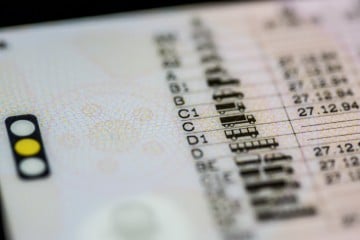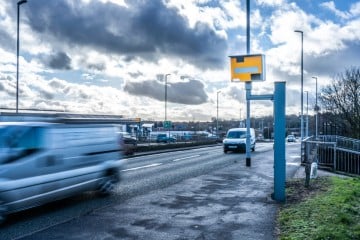"At 17, your car insurance is always going to be expensive. Being realistic about choosing a car you can afford to insure will go a long way to making your insurance affordable. Black boxes, avoiding modifications and increasing your excess are all quick ways to save too. Just make sure you understand the pros as well as the cons before picking your policy."
What level of insurance do 17-year-olds need?
Just like for any other driver, 17-year-olds need at least third party insurance to legally drive on the road.
This isn't always the best option for teenage drivers though. Third party cover tends to be far more expensive for them than other levels of cover, even though it covers less.
This is mainly because, in the past, newer drivers tended to take out third party cover as it was cheaper. As they tend to be involved in more collisions than older drivers, they then began to claim in large numbers. This then drove up the cost of this type of insurance dramatically.
Fully comprehensive cover now tends to be the cheaper option for young drivers, even though it provides a higher level of insurance.
Haven't passed your test yet? Then you'll need learner driver insurance.
To help you decide which level of cover is best for you, here’s a more in-depth look at the levels we compare quotes for:
How much is car insurance for a 17-year-old?
According to our car insurance price index, this is the average cost of a comprehensive policy for 17 year-olds*:
Fully comprehensive
£2,258
*Confused.com price index Q1 2025.
Insurance can be expensive for teenage drivers, especially 17-year-olds who've just passed their test.
In fact, our data shows that 17-year-olds pay £2,258* for their insurance on average - that's more than three times the average price across all ages of £777*.
There are several reasons for this, but it mainly comes down to a lack of experience. As newly qualified 17-year-olds are more likely to be involved in an accident than more experienced drivers, they pay more for their insurance.
There are figures to back up this up too: male drivers aged between 17-24 are 4 times as likely to be involved in a fatal or serious accident compared with drivers over 25.**
*Confused.com price index data, Q1 2025.
**According to Government research 2023.
When will my insurance start to get cheaper?
Here’s what drivers pay for their insurance on average based on their age.
17-20-year-olds+
£2,151
20-29-year-olds+
£1,365
30-39-year-olds+
£939
+Confused.com price index data Q1 2025.
No matter what, 17-year-olds are always going to pay more for their car insurance than older, more experienced age groups.
The good new is, though, that your car insurance should start to go down as you get older and gain more driving experience.
That's if none of your other circumstances change like:
- Where you live
- What car you drive
- How much excess you choose to pay
You should see a more dramatic drop in cover at around age 25.
But even before that, if you stay claim free, your price should drop year on year.
What can 17-year-olds do to get cheaper cover?
Although insurance for new drivers is always going to be expensive, there are a few things you can do to bring the cost of your cover down.
Add a named driver to your policy: Adding a more experienced named driver to your policy could bring the cost of your cover down by 23%+.
Get black box insurance: It isn’t for everyone, but black box insurance could help you lower your insurance costs. These policies, also known as telematics insurance policies, track your driving and award you a score. The better your score, the better the price you might get when you come to renew.
Choose fully comprehensive cover: Third-party insurance used to be cheaper than fully comprehensive. But due to an increase in inexperienced or high-risk drivers choosing third party, and then claiming, the cost of comprehensive cover tends to be far cheaper.
Estimate your mileage accurately: When you get a quote, we'll ask you for your annual mileage. Covering yourself for more miles than you actually drive means you pay more for your cover than you need to.
Change your voluntary excess: The amount of voluntary excess you agree to pay can influence the cost of your insurance. The most popular excess amount chosen by our customers is £250+ - but choosing to pay a bit more, or less, could lead to a better price. Just make sure you can afford whatever excess you agree to.
Buy a car in a low insurance group: If you’ve yet to buy a car, choosing one in a low car insurance group can help keep your costs down. You'll find some of the cheapest cars to insure in the lower insurance groups.
Compare quotes: Comparing car insurance quotes lets you see what deals are out there, and find the best one for you at the right price.
+Confused.com data Q4 2024.
Is black box insurance good for teenage drivers?
Black box insurance is a popular choice with younger drivers as it can help make cover more affordable. But it might not be for everyone.
With most black box insurance policies, your driving is monitored, either through an app or a small black box device fitted to your car. The app and black box both monitor things like how fast you drive, how quickly you brake and how far you travel.
You're then awarded a driving score. If you build up a good score, you should be offered cheaper insurance when you renew. You can even get green car insurance policies that'll reward you further based on how economically you drive.
Many younger drivers use a black box policy for the first few years of driving, when their costs are typically highest.
But while it can save you money, there are some drawbacks:
It may not save you money right away: Some policies only offer you cheaper cover at renewal, meaning you’ll have to build up your driving score for a whole year before your price drops.
It might not save you money at all: If you’re not a diligent driver, you’ll fail to build up a good driving score, meaning your insurance won’t be any cheaper than standard non-black-box cover.
You might have to use your mobile data: Some policies track your driving with an app rather than a physical device. This means you’ll have to use your own mobile data while driving, which could be expensive if you’re not on an unlimited data plan.

Is temporary insurance good for 17-year-olds?
Average cost of temp cover for 17-20-year-olds2:
1 day of cover
£61
2TempCover data December 2024.
If you’re 17 and only an occasional driver, or don’t have your own car yet and want to be insured on someone else’s while you look for one, temporary insurance can be good option.
Policies can last anything from 1 hour up to 28 days, giving you the flexibility to take out the exact amount of cover you need.
There are a few drawbacks though:
Temporary policies are more expensive overall, so a month’s worth of cover with a temp policy may end up costing far more than it would on a standard annual policy. The benefit is, though, that you need only take out 1 month’s worth of cover, rather than the whole year’s worth of insurance you’d need to commit to with a standard car policy.
Temporary policies are also a little more strict on what criteria you need to meet to take one out, so make sure to read the terms and conditions before taking out a policy.
What our car insurance expert says
What insurance add-ons are useful for 17-year-old drivers?
When you compare quotes, we'll ask you if you want to add any extras onto your policy. These add-ons allow you to make sure your car insurance covers exactly what you want it to, though they do come at a cost.
Add-ons that could be especially handy for 17-year-old drivers include:
Breakdown cover
Courtesy car cover
Motor legal cover






